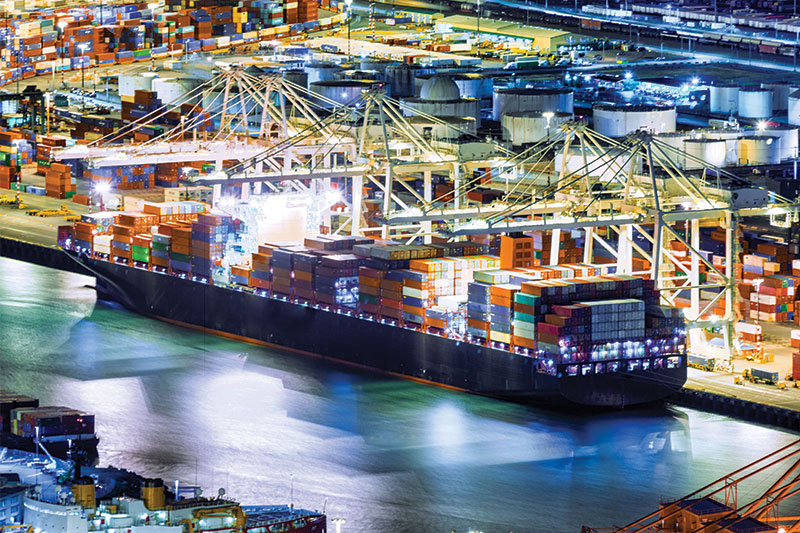SMC3 panel takes a look at nearshoring and reshoring, as China goes through some shifts

When looking at the global supply chain, China’s role and influence on operations and processes cannot be understated. That was made clear by a pair of supply chain experts in a session at last week’s SMC3 JumpStart 2023 conference held in Atlanta.
The session—entitled “China’s Global Impact on the Supply Chain”—featured Dr. John Kent, Director, Supply Chain China Initiatives Clinical Professor, J.B. Hunt Department of Supply Chain Management, Senior Fellow, George H.W. Bush Foundation for US-China Relations, for the Sam M. Walton College of Business, University of Arkansas, and Jon Monroe, President, Jon Monroe Consulting, an ocean transportation and intermodal supply chain strategies and technology consultancy.
Receiving a fair amount of attention during their session was the topic is nearshoring and reshoring, coupled with what Monroe referred to as a lot of instability and also a shift in U.S. distribution patterns.
Kent explained that the possibility of a more meaningful shift to nearshoring and reshoring is a product of months turning into years of conversation on it, going back to 2018, with it heading in a direction he said is only going to increase.
“In my mind, there is a capacity dilemma, in terms of what we can make [produce and manufacture], which relates to nearshoring,” he said. “For an LTL carrier, moving freight domestically, for example, your origins and destinations are all in the U.S., Mexico, and China. When you talk about nearshoring, the goods come from China or another place to major U.S. ports. It does not really matter where it is coming from, but it increases a focus on some of the major U.S. ports and hubs in places like Dallas, Atlanta, Chicago, and Los Angeles [among others]. There is a lot of capacity in China, and it is going to be difficult to move all of that.”
As a recommendation to supply chain and logistics stakeholders in the audience, Kent said it is wise to develop relationships with people making freight-related decisions in Asia and other closet to home locales like Mexico and Canada, in order to more effectively monitor operations and processes.
Monroe observed that revolves around manufacturing capacity, including volume and costs, especially when looking at China.
“One of the lessons learned from Covid is that what was previously the most stable and sophisticated manufacturing country in the world has become unstable—and that shocked a lot of people,” he said. “That led to a push out of the C-suite to diversify and have a plan B for alternative sourcing regions, like Mexico, Vietnam, India, and Pakistan, which are all key destinations today.”
Even though this is a key piece of advice, Monroe said it comes with a caveat, in that the quality of products coming from companies not in China is not as good. But, at the same, he noted, that does not eliminate the need for shippers to diversity global manufacturing and sourcing locales.
“You cannot continue to have all of your [manufacturing and sourcing] eggs in the China basket,” he said. “Most of us do that as the current set-up, to some extent, because the business we do is related to the Chinese ports, but that will change. Companies are moving away from and out of China faster than recognized.”

Article Topics
News & Resources
Latest in Materials Handling
Ergonomics Update: Hearing protection in the warehouse Parcel handling on the move An inside look at picking technologies April Services PMI contracts following 15 months of growth, reports ISM Where rack meets automation Comau’s Advanced Solutions Drive The Benefits Of Automation For Diversified Industries Toyota Industries Corporation launches Toyota Automated Logistics Group to house acquired companies More Materials HandlingAbout the Author
Subscribe to Materials Handling Magazine

Find out what the world's most innovative companies are doing to improve productivity in their plants and distribution centers.
Start your FREE subscription today.
April 2024 Modern Materials Handling

Latest Resources










